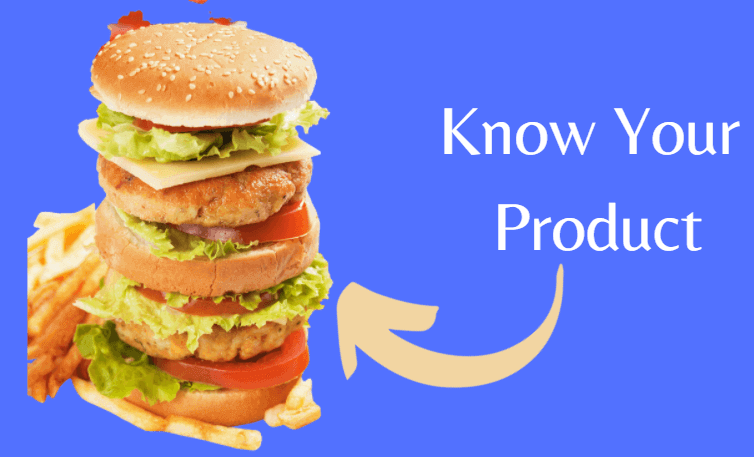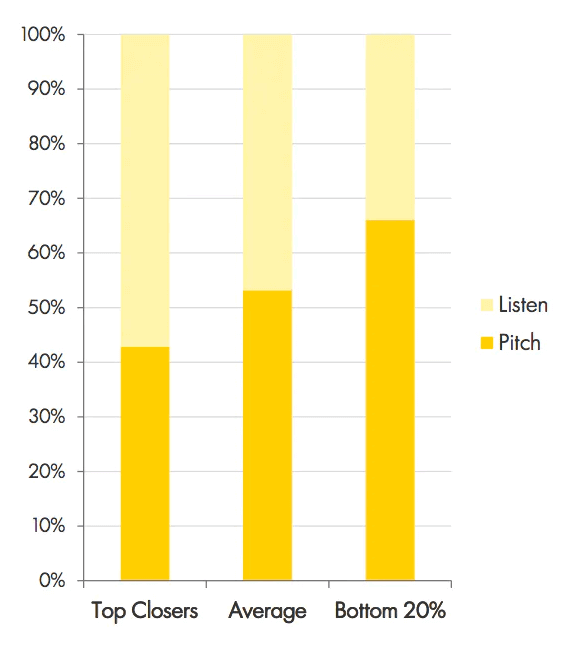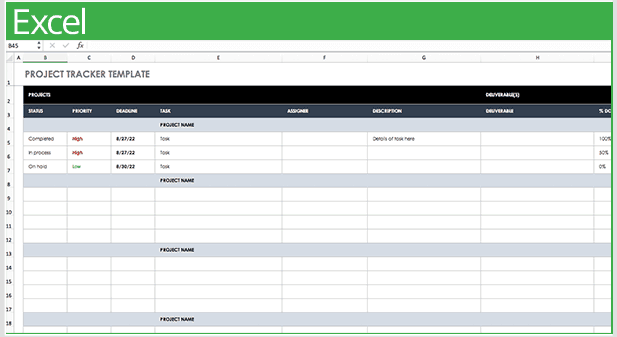The good news is that there are many effective cold calling techniques. Implementing these will make your cold calls more effective and help you to beat the competition.
Numbers don’t lie.
Statistics tell us that cold calling is still a viable part of the marketing landscape as we move deeper into the Internet Age.
In fact, 51 percent of company owners prefer a good, old-fashioned phone call to email and other media new and old.
Cold calling is a technique that has been around since the 1800s, and it's still as effective as ever.
It's even more powerful in the digital age where we can find out so much about people before we ever call them.
Effective Cold calling techniques This Year
This article provides a series of cold-calling tips and techniques, including how to improve your cold-calling with technology like CRM systems and social media.
1. Smile When You're on the Phone

While it might seem like a silly idea since the person you're calling can't see you, smiling during a cold call is just one of many strategies that helps to build rapport and increase the chance of a sale.
Smiling is a universal signal of friendliness, and the person on the other end will often let their guard down if you can make them think that they're having a real conversation with someone who genuinely cares about what they have to say.
Not convinced?
For one study, researchers recorded how often several college students smiled during their conversations with strangers.
Then they replayed the recordings to the same people and asked them if they felt like they were talking to someone who truly cared about what was being said or someone who didn't care at all.
The results showed that those subjects thought more highly of the people who had smiled, even when they didn't know that there was a recording being played.
Smiling is powerful, So smile while you're on the phone - it's another way to build rapport with your prospect and make them feel at ease so that you can get past their gatekeeper or receptionist!
2. Know Your Product Inside and Out
Cold calling is hard work. It's even harder if you don't know your product.
You'll be at a disadvantage when the person on the other end asks specific questions that you can’t answer easily because you're not prepared.

Instead of the previous nightmare scenario, make sure to spend time with your sales team before you start cold-calling so that everyone knows the product(s) and can recite it to anyone on the other end of the phone who asks with confidence.
The bottom line is to know the product inside and out. But if they stump you during a cold call then just be honest - tell them that's not something you've done before or don't know as much about that part of the product.
Assure them you can definitely find out more information and get back in touch. The good thing is that it gives you another opportunity to speak with them.
You want to sound like an expert, but it’s not the end of the world to not know everything. Just make sure to find out the answer and get back to them in short order.
3. Listen to What the Other Person is Saying
One of the best ways that you can improve your ability to cold call successfully is by being a good listener when talking with prospects on the phone.
Most people tend to think about what they want to say next while somebody else is talking - it’s natural - but it's critical to understand what they're saying and only formulate a response AFTER they've said it.
This could be the difference between making a sale or getting written off as another cold-calling hack.
If you're asking the right questions, it's even easier to listen because all your time is spent listening to their answers and explanations.
Studies show that the best sales experts speak 43% of the time and the customer or the prospect speaks 57% of the time.

Once they've answered, take some time and think about what was just said before coming up with a response that isn't canned.
You want their responses to be part of an active conversation between two humans, not a robot asking questions and making statements.
A good way to test how you're doing as a listener is to ask yourself after each call if their answers were what you expected or if they surprised you with something that doesn't match up with the other responses from previous calls.
You should be learning new information about your prospect's company every time they speak.
If you find that there's a pattern (i.e., they always talk about X, Y, or Z) then it might be time to move on from them because you've already gathered everything that can be known about their company.
4. Don't be Pushy or Forceful
One of the biggest mistakes that anyone can make during a cold call is being pushy or forceful with their prospect.
A lot of times it's because they're nervous and want to get past the person on the other line, but this will just put them off even more than if you were to be polite but firm in your conviction about why your product is right for them.
Remember that you're not there to close the sale, but instead just gather information about whether your product might be a good fit or not.
Despite massive belief to the contrary, the goal of cold calling isn't to sell something; it's simply to ask questions and get answers so that you can make an informed decision on how well your product might help the person on the line.
If your prospect doesn't need what you're offering, then it's better to hear that from them instead of trying to sell something they don't need.
The last thing anyone wants is somebody telling them how much their product could help if only they'd buy into the hype.
Even if you manage to convince a sucker or two to buy something that they shouldn’t have, the future word-of-mouth damage is not worth it. That kind of transaction does no one any good.
You don't want them to feel like you're trying to bully them into something they don't need so always be polite and firm in your conviction about why your product is right for their company, but never pushy.
If they say no, then just thank them for their time and let the conversation end there.
If you can get them to agree to meet with you, then that's great - but don't push for something they're not willing to give right away.
It might be necessary in some cases to remember that your goal isn't simply about making cold calls.
It's also to improve by practicing how well you can cold call by asking the right questions to get answers that you can use.
Some people might think that being pushy is a good thing because it means getting rid of prospects who aren't interested in your product, but there's nothing wrong with keeping them on the line and trying again another day if they didn't have an immediate answer.
The bottom line here is that you’re not going for a one-off sale but rather should look towards developing a long-term customer relationship.
Customer acquisition is just the first step. In a perfect world, you’d like your outreach to yield multiple purchases over a long period of time. That’s a true customer. For that, settle in to play the long game.
5. Be Polite but Firm in Your Conviction
Being pushy is one of the biggest mistakes that anyone can make during a cold call.
If you're trying to sell something and your prospect doesn't want it, then there's nothing wrong with ending the conversation early by thanking them for their time and moving on.
But if they agree to meet up or give you more information about how your product might be a good fit for their company, then that's great - but don't push them into something they're not willing to give right away.
You don't want a prospect to feel like they're being bullied into something if they don't really need it, so always be polite but firm (with conviction) in your explanation about why they should give your product a chance.
You want them to feel like you're trying to help instead of force something into their lap that doesn't belong there.
If they say no, then just thank them for their time and let the conversation end there until another day when you'll be able to ask more questions.
6. Ask for Feedback After Every Call

As the call reaches a wrap, be sure that you ask how it went. Knowing which parts of your cold-calling technique do and don't work will help improve your skills for the next time.
The ultimate goal is that a prospect never feels like they're being forced into something but rather that the two of you are working towards the same goal of feeling a potential need in their company.
If there's a particular question or way to phrase things that works better than others, then you'll know what to do next time.
While it might seem counterintuitive or a blow to your ego to ask for the person you called to critique your performance, there's no better way to find out the honest truth about your cold calling performance than to listen and learn from the people that you're trying to sell to.
"I'm just doing my job." There's nothing wrong with saying this if it means keeping your prospect on the line long enough for them to agree (or disagree) about whatever it is that you were calling about.
However, what you want out of every call should be to improve how well you do your job by getting feedback from those who have already given it a chance.
Don't be afraid of the truth, because there's nothing worse than being told that something is great if it actually isn't going as planned. Instead, use every call as a learning experience.
If you're trying to sell your product and the person on the phone seems like they don't know what it is or how it works, then bring up some of those points that make it worth buying for them before closing out the call politely (thank you) without pushing too hard.
Sometimes the good communication vibes just aren’t there.
And if you happen to make a sale along the way, so much the better.
Don't forget.
If there is a particular question or way of asking things that someone has specifically told you works better than others, then be sure to use it next time.
The process is similar to A/B testing in other areas of marketing.
7. Keep a Log of Your Calls

The bottom line is that cold-calling can be one of the most effective ways to get a customer interested in what you're offering, but only if it's done properly.
Remember (we’ve said this a time or two before but it bears repeating): this isn't about making the sale - instead think of every call as giving your own performance review so that you know where you need to improve right from day one.
Keep a log of all calls made so that you can track how effective your cold-calling is becoming over time. Include any notes that you think are helpful:
- Did you make a sale or schedule a second call?
- Include a self-critique
- List suggestions from the person you called
These are just ideas. It’s your log so put whatever in there you think might be helpful.
With a log, you can monitor how often people agree to give your product a chance and whether or not it's because of the questions that you're asking them or what information they share with you about their business too.
In the end, this will help improve how well you do in future calls when it comes time to dial it up again.
Final Thoughts
In conclusion, there are several key aspects to effective cold-calling that you should keep in mind whenever it's time for another pitch.
While everyone wants the best deal, nobody likes being pushed into something without knowing what they're getting first.
With these simple cold calling techniques and tricks on how to make your cold calling more efficient over time, you'll be able better to understand what makes people tick and how to present your product so that it offers genuine value for their needs:
A call you can feel confident about without feeling like somebody is trying to force something on them.
The bottom line is that cold-calling can be one of the most effective ways to get a customer interested in what you're offering, but only if it's done properly. Remember (a final time): this isn't about making the sale.
We’ve said that before, right?
Also keep in mind that cold-calling is not going out of fashion - at least not until far in the future and we’re communicating psychically. For now, it remains a solidly useful tool in many digital marketers’ bag.


